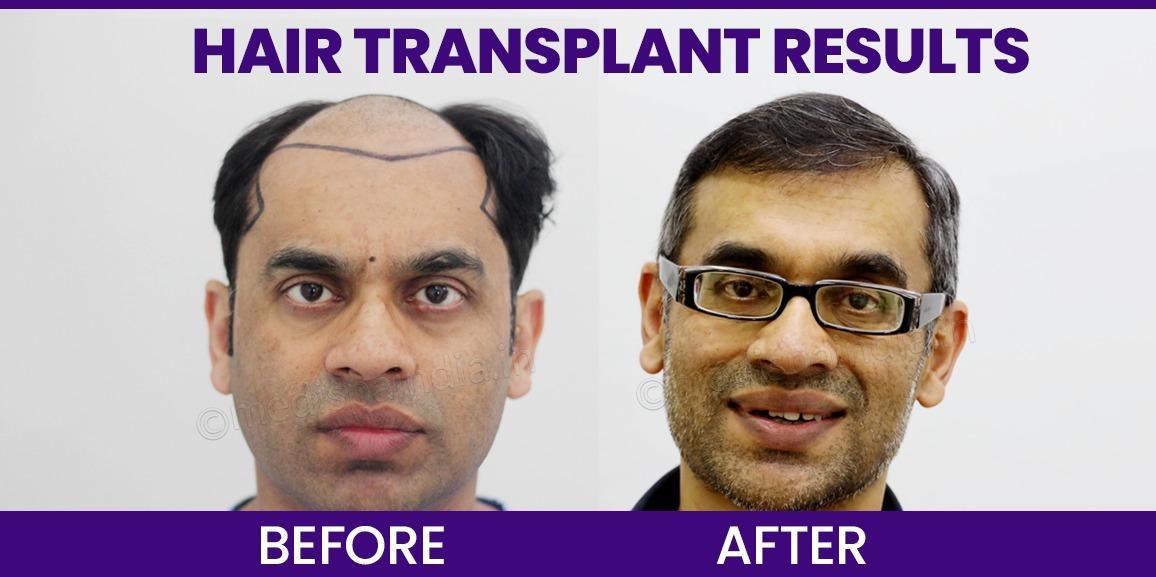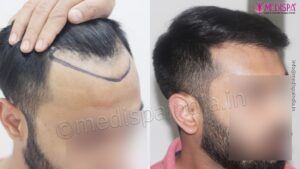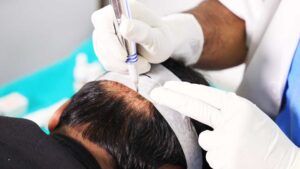
Hair transplantation is a minimally invasive surgical procedure that involves extracting hair follicles from donor areas and implanting them into bald areas. Despite the various methods available for treating hair loss, hair transplant surgeries are widely embraced globally.
Everyone desires a successful hair transplant procedure with flawless results. Thanks to advanced technologies, hair transplant surgery has become a significant achievement in today’s society. It enables individuals to achieve maximum hair density and natural-looking outcomes.
Jaipur has become a hub for hair transplant procedures for more than a decade, attracting individuals from all corners of the world. This is credited to the highly skilled and renowned surgeon for hair transplant in Jaipur, known for their exceptional success rates after years of practice.
The hair transplant cost in Jaipur has become quite affordable, even with the provision of top-notch services. The oversaturation of the hair transplant industry is responsible for this, as it has led to a competitive environment among clinics. For over a decade, Medispa hair transplant clinics in Delhi and Jaipur have been at the forefront of this industry.
Each year, we cater to numerous national and international patients and are recognized as one of the finest hair transplant clinics globally. Our reputation is built on consistently delivering exceptional results for every patient experiencing hair loss, thanks to the expertise, skills, and comprehensive approach of our chief surgeon.
Despite advancements in the field of hair transplantation, many individuals who undergo the procedure are left dissatisfied with the outcomes. This raises the question of why there is a rise in dissatisfaction despite the progress made in hair transplant techniques.
In fact, due to the increasing amount of budget-friendly clinics and assertive promotional tactics, hair transplant clinics are mainly concentrated on luring in patients and making a profit by reducing expenses and sacrificing the quality of the procedure, which often goes unnoticed.
In reality, as the number of affordable clinics and aggressive marketing strategies continues to rise, hair transplant clinics are primarily focused on attracting patients and profiting from the process by cutting costs and compromising the procedure’s quality, which is often overlooked.
Understanding hair transplant procedure
Follicular units are extracted from the donor region in a cosmetic procedure called a hair transplant, which is minimally invasive. The selection of these units depends on the density of hair in the donor area. Once the hair grafts are prepared for the new hairline, they are then implanted into the recipient’s balding area.
The two primary techniques for hair transplantation can be differentiated by the approach taken to extract the grafts. In the FUT procedure, a small piece of scalp tissue is removed from the donor area, transferred to the graft separation site, and then meticulously dissected to isolate each individual follicle along with the necessary surrounding tissues. These dissected hair follicles are then transplanted to the balding region designated as the recipient site. On the other hand, the FUE method involves the extraction of individual hair follicular grafts using a surgical tool, which are subsequently implanted at the recipient site. A more recent approach to addressing severe hair loss combines elements of both FUT and FUE, enabling the extraction of over 4000 grafts and offering additional benefits compared to either technique used independently.
Surgical steps in hair transplant procedure?
Various steps are performed during a single hair transplantation session, such as:
- Depending on the chosen hair transplant technique, the head may be shaved. For the FUT hair transplant procedure, only the donor area where the strip will be collected is shaved. However, for the FUE hair transplant technique, the entire head must be shaved in order to retrieve individual grafts from the donor area.
- Local anesthesia is administered to both the donor and recipient areas after the head is shaved. The method of choice varies among clinics; some opt for total anesthesia in one dose, while others prefer to administer it initially at the donor site and then again after harvesting the grafts at the recipient site.
- The follicular grafts are harvested cautiously to prevent overharvesting, taking into consideration the safe donor area. Each treatment utilizes a powerful loop magnifier. The grafts are harvested based on the technique and the patients’ specific circumstances.
- Following the FUT procedure, the donor site is closed, preferably with trichophytic closure, to ensure an almost undetectable scar.
- The recipient site is prepared using a procedure called slitting, which must be done meticulously to achieve natural-looking results.
- The harvested hair transplants from the donor site are then inserted into the slits of the recipient site.
- Optimal results for a realistic hairline are achieved by using single thin grafts in the frontal area and temporal triangles. To achieve a denser look or maximum coverage, thicker grafts are strategically placed in the posterior regions.
- Following a hair transplant procedure, tiny clots may form around the newly transplanted hairs. These clots are carefully removed by the hospital’s proficient team on the following day.
- It is crucial to strictly follow the post-procedure guidelines given to you by your hair transplant surgeon to ensure successful results.







